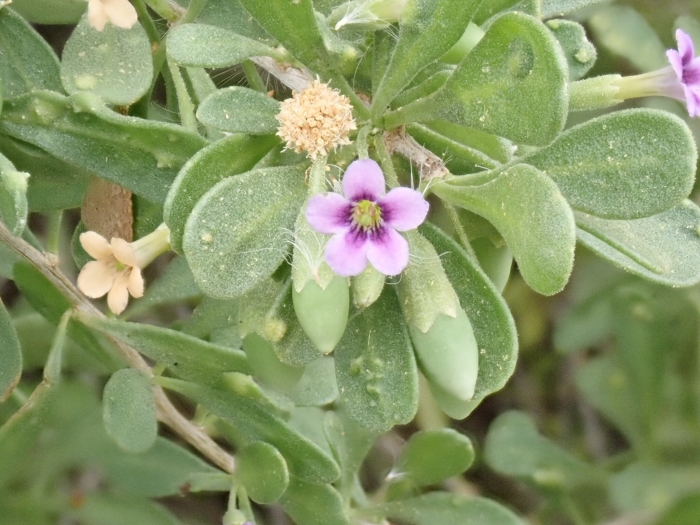Fremont’s Desert-Thorn
(Lycium fremontii)
Fremont’s Desert-Thorn (Lycium fremontii)
/
/

John Brew
CC BY 4.0
Image By:
John Brew
Recorded By:
Copyright:
CC BY 4.0
Copyright Notice:
Photo by: John Brew | License Type: CC BY 4.0 | License URL: http://creativecommons.org/licenses/by/4.0/ | Rights Holder: John Brew | Publisher: iNaturalist | Date Created: 2018-11-22T17:56:15Z |








































Estimated Native Range
Summary
Lycium fremontii, commonly known as Fremont’s Desert-Thorn, is a deciduous shrub native to the arid desert washes, dry riverbeds, and scrublands of the Southwestern United States and Northwestern Mexico. It typically grows to a height of up to 4 meters (13 feet) and has a bushy, spreading habit with many thorny, leafy branches. The plant is well-adapted to its native harsh environments, thriving on well-drained soils and tolerating periods of drought.
Fremont’s Desert-Thorn is recognized for its small, bell-shaped purple flowers that bloom in the spring, attracting pollinators such as bees and butterflies. Its gray-green foliage and the presence of thorns along its branches add to its unique appearance. In cultivation, it is often used in xeriscaping, wildlife gardens, and as a natural barrier due to its thorny nature. It requires full sun exposure and can tolerate low to medium amounts of water, making it a low-maintenance choice for gardeners in arid regions. While it is not commonly afflicted by diseases, its thorns can make it difficult to handle, and it should be planted with care to avoid creating hazards.CC BY-SA 4.0
Fremont’s Desert-Thorn is recognized for its small, bell-shaped purple flowers that bloom in the spring, attracting pollinators such as bees and butterflies. Its gray-green foliage and the presence of thorns along its branches add to its unique appearance. In cultivation, it is often used in xeriscaping, wildlife gardens, and as a natural barrier due to its thorny nature. It requires full sun exposure and can tolerate low to medium amounts of water, making it a low-maintenance choice for gardeners in arid regions. While it is not commonly afflicted by diseases, its thorns can make it difficult to handle, and it should be planted with care to avoid creating hazards.CC BY-SA 4.0
Plant Description
- Plant Type: Shrub
- Height: 4-9 feet
- Width: 4-6 feet
- Growth Rate: Moderate
- Flower Color: Purple
- Flowering Season: Spring
- Leaf Retention: Deciduous
Growth Requirements
- Sun: Full Sun
- Water: Low, Medium
- Drainage: Fast
Common Uses
Bee Garden, Bird Garden, Butterfly Garden, Edible*Disclaimer: Easyscape's listed plant edibility is for informational use. Always verify the safety and proper identification of any plant before consumption., Erosion Control, Hummingbird Garden, Low Maintenance
Natural Habitat
Arid desert washes, dry riverbeds, and scrublands of the Southwestern United States and Northwestern Mexico
Other Names
Common Names: Fremont Wolfberry
Scientific Names: , Lycium fremontii, Lycium fremontii var. fremontii, Lycium fremontii var. congestum, Lycium fremontii subsp. viscidum, Lycium gracilipes, Lycium umbellatum, Lycium fremontii var. gracilipes,
GBIF Accepted Name: Lycium fremontii A.Gray